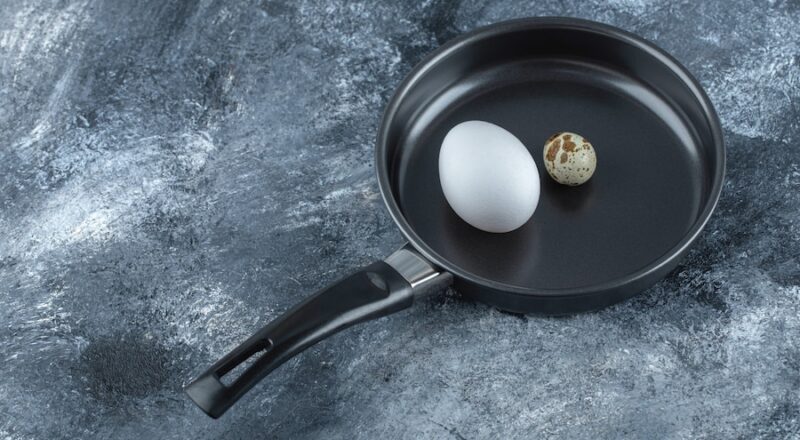Cooking a delicious filet mignon can be a delight for any home chef. In this article, we’ll explore the steps and tips on how to cook filet in cast iron skillet to achieve a perfect, mouth-watering steak that will impress your family and friends. Using a cast iron skillet not only enhances the flavor but also provides an even cooking surface, ensuring the best possible results.

Why Choose a Cast Iron Skillet?
Cast iron skillets have been around for centuries and are prized for their durability and heat retention properties. When it comes to cooking steaks, a cast iron skillet provides the perfect sear and even cooking temperature. Additionally, they are versatile and can be used on various heat sources, including gas, electric, and induction stoves, as well as in the oven.

Preparing Your Filet Mignon
Selecting the Right Cut
Choose a high-quality filet mignon, preferably with good marbling and a thickness of about 1.5 to 2 inches. The marbling ensures a juicy and flavorful steak, while the thickness allows for a perfect sear without overcooking the interior.
Seasoning the Steak
Generously season your filet mignon with kosher salt and freshly ground black pepper. For an extra layer of flavor, you can also add garlic powder, onion powder, or your favorite steak seasoning. Allow the steak to rest at room temperature for at least 30 minutes before cooking.

Preparing the Cast Iron Skillet
Preheat your cast iron skillet over medium-high heat for about 5-10 minutes. The skillet should be hot enough to create a good sear on the steak but not so hot that it burns the outside before the inside cooks. Add a small amount of oil with a high smoke point, such as vegetable or canola oil, and swirl it around to coat the skillet.

Cooking the Filet Mignon
Searing the Steak
Place the seasoned filet mignon in the preheated cast iron skillet, and let it sear for 2-3 minutes on each side, without moving the steak. This will create a beautiful crust and lock in the juices. For an even sear, you can use a pair of tongs to rotate the steak slightly during cooking.
Finishing in the Oven
Once both sides of the steak are seared, transfer the cast iron skillet to a preheated oven at 400F (200C). Allow the steak to cook for an additional 5-7 minutes for medium-rare or longer if you prefer your steak more well-done. Use a meat thermometer to check the internal temperature, aiming for 130F (54C) for medium-rare.
Resting the Steak
After removing the skillet from the oven, transfer the filet mignon to a cutting board and let it rest for 5-10 minutes. This allows the juices to redistribute throughout the steak, ensuring a tender and flavorful result.
Serving Your Filet Mignon
Slice the filet mignon against the grain and serve it with your favorite sides. Options include garlic mashed potatoes, steamed vegetables, or a fresh salad. For an added touch, top your steak with a pat of compound butter or a drizzle of balsamic reduction.
Additional Tips for Perfect Filet Mignon
Using a Meat Thermometer
A meat thermometer is an essential tool for ensuring your steak is cooked to the desired doneness. Insert the thermometer into the thickest part of the steak, and refer to the following temperatures:
- Rare: 120F (49C)
- Medium-Rare: 130F (54C)
- Medium: 140F (60C)
- Medium-Well: 150F (66C)
- Well-Done: 160F (71C)
Resting the Steak
Resting is a crucial step that allows the juices to redistribute throughout the meat. Cover the steak loosely with aluminum foil during the resting period to keep it warm.
Experiment with Flavors
Feel free to experiment with different seasonings and marinades to personalize your filet mignon. Fresh herbs like rosemary, thyme, and oregano can be added to the skillet along with garlic cloves and butter for added flavor during the searing process.
Maintaining Your Cast Iron Skillet
Proper maintenance of your cast iron skillet ensures it will last for generations. After each use, clean the skillet with hot water and a stiff brush. Avoid using soap, as it can strip the seasoning. Dry the skillet thoroughly and apply a thin layer of oil to prevent rust.
Seasoning Your Skillet
Seasoning your cast iron skillet is essential for maintaining its non-stick surface. To season, apply a thin layer of vegetable oil to the skillet and bake it upside down in a 350F (175C) oven for an hour. Allow it to cool completely before storing.
Common Mistakes to Avoid
Overcrowding the Skillet
Overcrowding the skillet can cause the steaks to steam rather than sear. Ensure there is enough space between each piece of meat to achieve a good sear.
Using the Wrong Oil
Use high smoke point oils, such as vegetable or canola oil, to prevent the oil from burning and imparting a bitter taste to the steak.
Not Preheating the Skillet
A properly preheated skillet is essential for achieving a good sear. Allow enough time for the skillet to heat up before adding the steak.
FAQs
How do I know when my filet mignon is done?
Use a meat thermometer to check the internal temperature. For medium-rare, aim for 130F (54C), and for medium, aim for 140F (60C).
Can I use other cuts of steak with this method?
Yes, you can use other cuts of steak, such as ribeye or New York strip. Adjust the cooking times based on the thickness and desired doneness of the steak.
Additional Resources
For more information on cast iron skillets and maintenance, check out these related articles
Learn how to clean and care for your cast iron skillet after each use by visiting this page from our blog. Another essential cast iron accessory you might find useful is a cast iron cleaner. Find out more about it here.
For a detailed recipe and other options, check out this external link: Cast Iron Skillet Steak Recipe from Taste of Home.
As an Amazon Associate, I earn from qualifying purchases.

